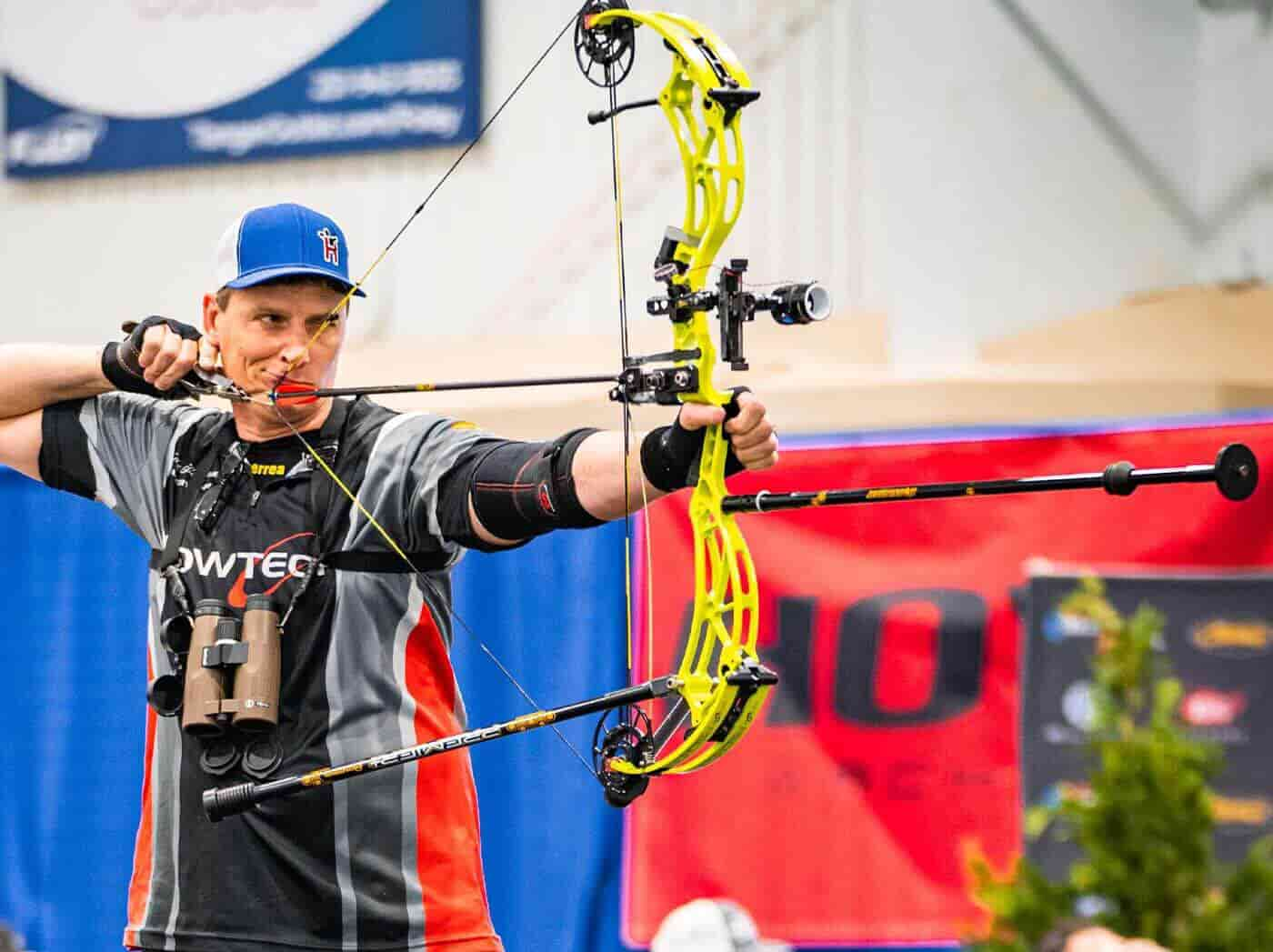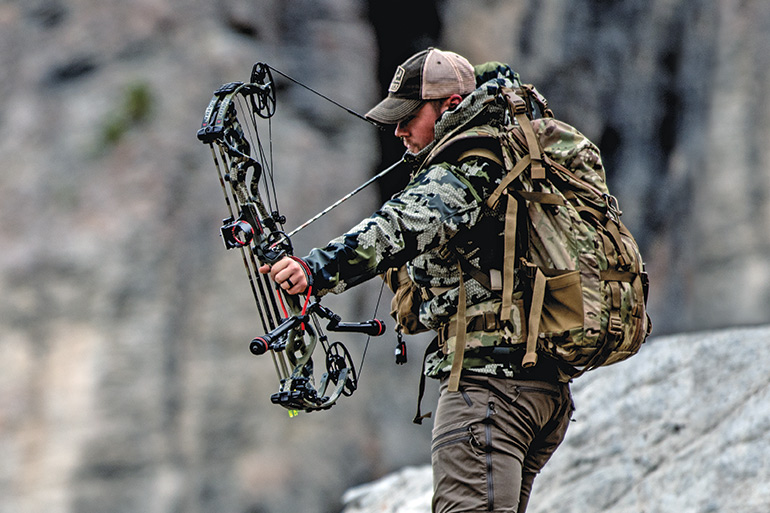Upgrade Your Archery Arrangement: Top-rated Archery Stabilizers Reviewed
Upgrade Your Archery Arrangement: Top-rated Archery Stabilizers Reviewed
Blog Article
Master the Art of Archery: Understanding the Value of a Stabilizer in Your Arrangement
Whether one is a seasoned archer or just starting their journey, the value of a stabilizer in their arrangement can not be overstated. By understanding the benefits of using a stabilizer, thinking about the ideal factors when picking one, and appropriately mounting and readjusting it, archers can elevate their abilities to new elevations.
The Role of a Stabilizer in Archery
A stabilizer plays a vital role in archery by enhancing equilibrium and minimizing vibrations during the shot. A stabilizer aids to neutralize these vibrations by absorbing and dissipating the power (archery stabilizer).
One of the major benefits of a stabilizer is its capability to enhance equilibrium. When an archer holds a bow, it can be testing to maintain a steady objective. The weight of the stabilizer aids to disperse the weight evenly, decreasing the pressure on the archer's arm and improving security. This enables the archer to concentrate on their aim and implement a more precise shot.
In addition to equilibrium, a stabilizer likewise aids to reduce torque. When an archer releases the bowstring, there is an all-natural propensity for the acquiesce revolve in the hand. This turning, known as torque, can create the arrowhead to divert off-course. The weight and style of a stabilizer combat this turning, guaranteeing a much more accurate and consistent shot.
Benefits of Utilizing a Stabilizer
The use of a stabilizer in archery supplies countless advantages that enhance an archer's efficiency and overall capturing experience. By absorbing and dampening these resonances, the stabilizer improves the security of the bow, enabling for even more consistent and specific shots.
Second of all, a stabilizer helps to stabilize the bow by adding weight to the front end. This weight circulation counteracts the all-natural propensity of the bow to tip forward upon launch, minimizing the amount of activity and boosting the archer's capacity to keep goal on target.

Last but not least, a stabilizer can additionally function as a shock absorber, lowering the shock and recoil experienced upon launch. This not only improves the convenience of shooting yet also reduces the risk of injury or strain on the archer's body.
Exactly How a Stabilizer Improves Accuracy
Enhancing the accuracy of an archer's shots, a stabilizer plays a vital role in enhancing general performance. archery stabilizer. By adding security to the bow, a stabilizer aids lessen the undesirable movement and vibration that can take place during a shot. This reduction in activity enables the archer to maintain a consistent aim, leading to even more regular and exact shots

In addition, a stabilizer helps to wet resonances that occur upon release. These resonances can create the acquiesce drink, affecting the arrowhead's trajectory and accuracy. By absorbing and dissipating these resonances, a stabilizer assists to preserve the bow's security and make sure a accurate and smooth shot.
In addition, a stabilizer can also help in balancing the weight circulation of the bow (archery stabilizer). By including weight to the front of the bow, a stabilizer aids to balance the weight of accessories, such as views or quivers, which might be affixed to the bow. This well balanced weight circulation aids the archer keep a constant and controlled shooting setting, causing improved precision
Variables to Think About When Choosing a Stabilizer
When choosing a stabilizer for your bow, it is necessary to think about several variables that will certainly add to its general efficiency and viability for your individual capturing design. The very first aspect to think about is the size of the stabilizer. Stabilizers are available in different lengths, ranging from short to long. Longer stabilizers typically provide a lot more security and equilibrium, but they can also be larger and harder to maneuver. Shorter stabilizers, on the various other hand, use much better ability to move but might compromise some stability.
One more factor to take into consideration is the weight of the stabilizer. The weight of the stabilizer can affect the balance of your bow.
In addition, it is very important to consider the design and building and construction of the stabilizer. Some stabilizers have adjustable features, such as adjustable size or flexible weights, which enable you to customize the stabilizer to your particular demands. The materials made use of in the construction of the stabilizer can additionally influence its efficiency. Carbon fiber stabilizers are lightweight and sturdy, while aluminum stabilizers use an equilibrium in between weight and rigidity.
Various stabilizers may work far better for specific shooting designs, such as target read this shooting or searching. It is advisable to seek advice from with skilled archers or experts to determine which stabilizer will certainly finest match your individual requirements.
Tips for Properly Setting Up and Changing a Stabilizer
Proper installment and modification of a stabilizer is important for enhancing its performance and ensuring ideal shooting accuracy. When setting up a stabilizer, it is very important to follow a couple of crucial actions to ensure its effectiveness. Initially, figure out the ideal length of the stabilizer based on your shooting style and preferences. Longer stabilizers offer even more stability but can be much less manoeuvrable, while much shorter stabilizers provide web raised ability to move yet might give up security. As soon as you have selected the ideal size, attach the stabilizer to the bow making use of the given mounting equipment. Guarantee that the stabilizer is firmly fastened and aligned with the bow's riser.
After mounting the stabilizer, it is needed to make adjustments to attain the preferred balance and shot consistency. Start by readjusting the weight circulation along the stabilizer. Additionally, take into consideration readjusting the angle of the stabilizer to fine-tune the shot.

Conclusion
In verdict, a stabilizer plays a crucial role in archery by enhancing accuracy and decreasing bow torque. When choosing a stabilizer, variables such as weight, product, and length need to be considered to meet private requirements.
Additionally, a stabilizer can also assist in balancing the weight distribution of the bow. By including weight to the front of the bow, a stabilizer aids to balance the weight of accessories, such as quivers or sights, which might be attached to the bow. Some stabilizers have flexible features, such as adjustable length or adjustable weights, which enable you to tailor the stabilizer to your certain demands. Carbon fiber stabilizers are resilient and lightweight, see this here while aluminum stabilizers provide an equilibrium in between weight and rigidness.
Longer stabilizers provide even more security yet can be much less maneuverable, while shorter stabilizers provide boosted maneuverability however might give up stability.
Report this page